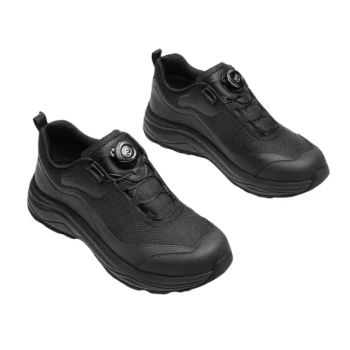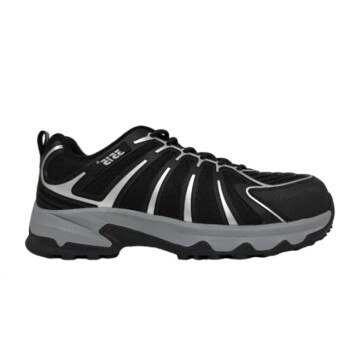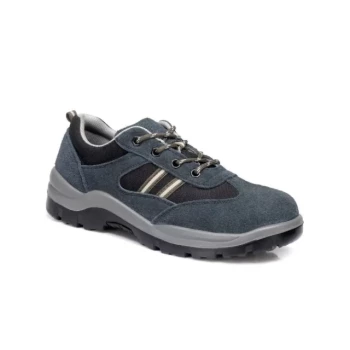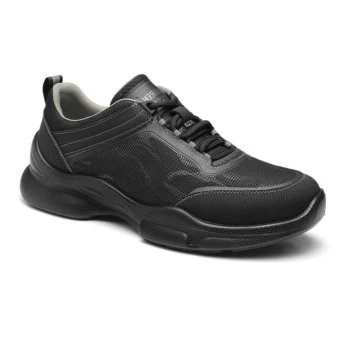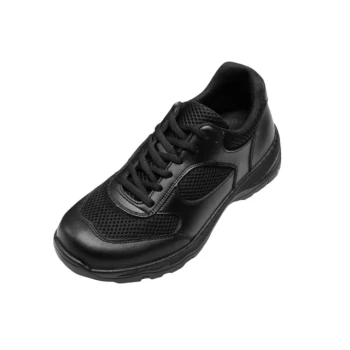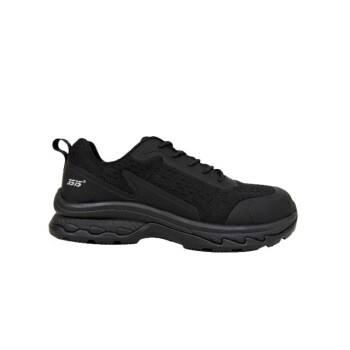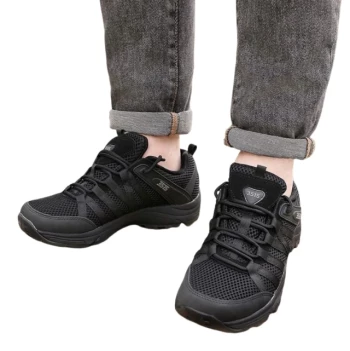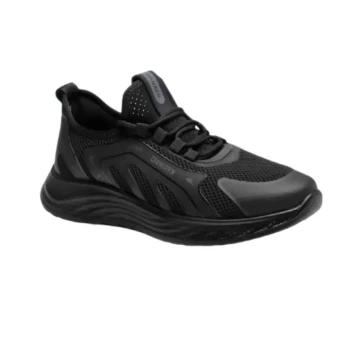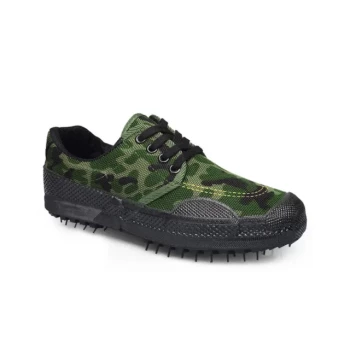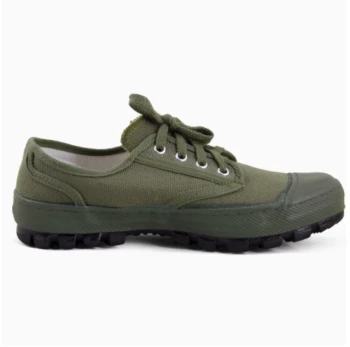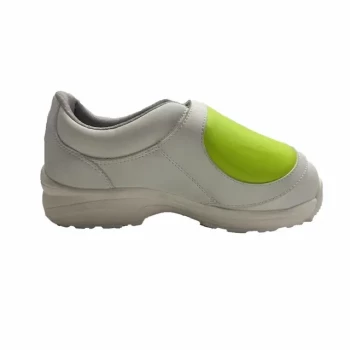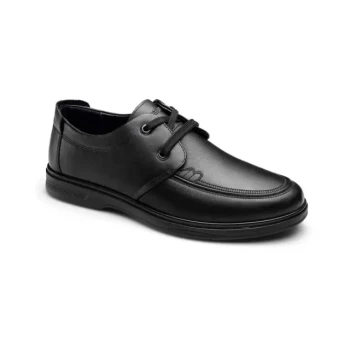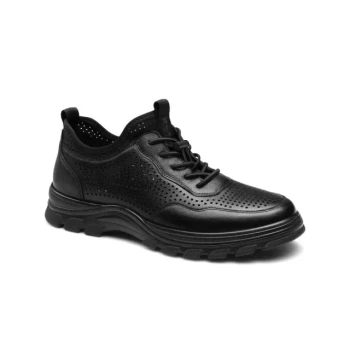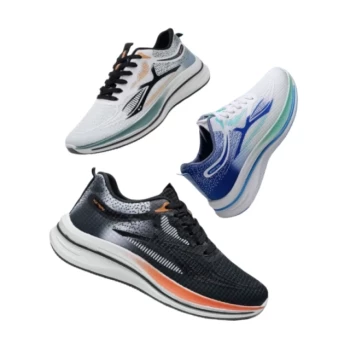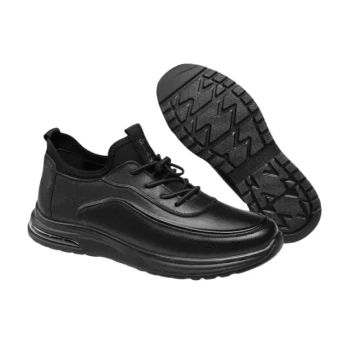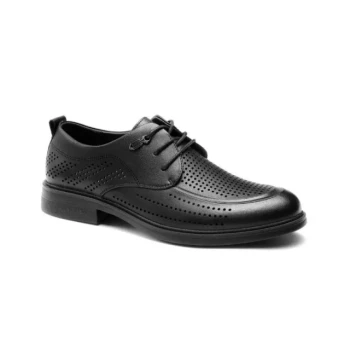My initial thought is to be a trusted technical advisor here. The user is asking about a specific efficiency difference, but I know what they really want is to optimize their winter riding. So, the direct answer is: the measurable power loss is minimal, maybe negligible for most, but the feel of power transfer, especially during hard efforts, is definitely different. It's not about raw watts; it's about overall effectiveness and comfort.
I'll start with a concise statement about this to hook them in and then frame the rest. The key is in the stiffness of the sole. Summer shoes have rock-solid soles, which are ideal levers for power transfer. Winter boots, however, need to balance pedaling with walkability and insulation. This often means a more flexible sole.
I know the references are key here. I'll explain the power transfer mechanics; a stiff sole lets your foot act as a direct extension of the pedal, which is great for sprints and climbs. Winter boots, for the obvious reasons, can't always match that. Deep lugs, like those on mountain bike boots, create an unstable platform on a small clipless pedal.
The thing is, measured power loss is probably pretty small, maybe even undetectable for most riders. The perception of inefficiency is what's important. Flexible soles let your foot wrap around the pedal, which results in hotspots and a feeling of wasted energy. And those lugs... they can make you feel disconnected and wobbly.
But warmth and safety are non-negotiable! The primary purpose of winter boots is to keep your feet functional in freezing temperatures, and that necessitates a different design. I'll make sure to convey the importance of these trade-offs, too. The walkability of winter boots might not be optimal for cycling, but it's essential for getting around in harsh conditions. And yes, they're heavier, and that means added rotational weight.
Finally, I'll offer some actionable advice. I'll give recommendations based on their cycling goals: a dedicated high-performance boot for racers who are ok sacrificing a little warmth; a well-insulated boot for long-distance comfort; or a boot that focuses on walkability for casual riders. Ultimately, the best choice is what allows you to ride safely and comfortably all season long. That's the biggest performance gain of all! In short, the measurable difference in pedaling efficiency is minimal. While a stiff-soled summer shoe provides a more direct power transfer, a quality winter cycling boot is designed to prioritize warmth and protection with only a slight, often imperceptible, compromise in pure wattage output. The most significant differences you will feel are in comfort during high-power efforts and stability on the pedal.
The debate between winter boots and summer shoes isn't truly about a major loss in power. It's a fundamental trade-off between the absolute stiffness optimized for warm-weather performance and the insulation, weatherproofing, and comfort required to ride effectively and safely in the cold.
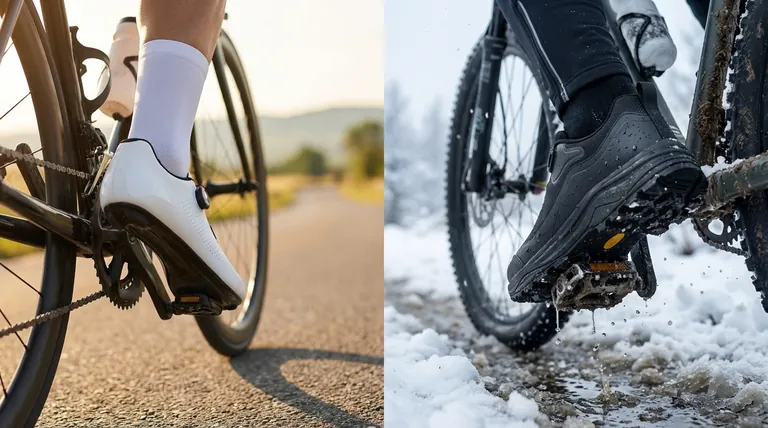
The Core Difference: Sole Stiffness
The foundation of pedaling efficiency is the shoe's sole. It acts as the lever transferring the force from your leg into the pedal spindle.
Why Stiff Soles Matter
A very stiff sole, typically made of carbon or rigid composite, minimizes flex. This ensures that nearly all the downward force you exert is translated directly into turning the cranks, without energy being wasted by your foot wrapping around the pedal.
The Feel of Summer Shoes
High-performance summer shoes provide a locked-in, connected feeling. During a sprint or a hard climb, the unyielding platform gives you instant feedback and a sense of maximum power transfer.
The Nature of Winter Boot Soles
Winter boots are constructed with different priorities. Their soles are often made of a slightly more forgiving nylon composite to accommodate thicker insulating materials and to allow for some flex when walking on slippery surfaces, a common necessity in winter riding.
Quantifying the "Efficiency" Loss
While a lab test might show a tiny wattage difference, the real-world impact is more about perception and comfort than a number on a screen.
Measured Power vs. Perceived Effort
For the vast majority of riders, the actual power loss from a slightly more flexible winter boot sole is negligible. You are not losing significant forward momentum because of your footwear.
The Comfort Factor
The perception of "inefficiency" in winter boots often comes from foot fatigue during intense efforts. A flexible sole can create pressure points or "hot spots" as your foot bends over the pedal, which can feel like wasted energy and cause discomfort on long rides.
The Role of the Tread
Many winter boots, especially those for mountain biking, have aggressive, deep lugs for traction in snow and mud. On a small clipless pedal, this tread can create a less stable connection, causing a subtle rocking or shifting that feels less secure than a flat-soled summer shoe.
Understanding the Trade-offs
Choosing winter footwear is a classic case of engineering compromises. You are trading one benefit for another.
The Non-Negotiable: Warmth and Safety
The primary purpose of a winter boot is to prevent your feet from getting cold and wet. Numb feet don't just hurt; they rob you of power and can lead to dangerous conditions like frostbite. No summer shoe with an overshoe can match the integrated insulation and weatherproofing of a dedicated winter boot.
The Compromise of Walkability
Winter riding often involves navigating icy patches or hike-a-bike sections through snow. The more flexible sole and aggressive tread of a winter boot are critical features for off-bike safety and stability.
The Impact of Weight and Bulk
Winter boots are inherently heavier and bulkier due to insulation and robust materials. This adds rotational weight, which can make accelerations feel slightly more sluggish compared to featherlight summer shoes.
Making the Right Choice for Your Ride
Your ideal footwear depends entirely on your goals for riding through the winter.
- If your primary focus is maximum performance for winter racing: A high-end, stiff-soled winter boot is the best choice, offering the ideal balance of power transfer and necessary insulation.
- If your primary focus is long-distance endurance and comfort: Prioritize a well-insulated boot over absolute stiffness. The marginal efficiency loss is insignificant compared to the performance gained by having warm, comfortable feet for hours.
- If your primary focus is commuting or casual riding in mixed conditions: A boot with a moderate sole and good tread for walkability is perfect. The slight pedaling compromise is a small price to pay for warmth and off-bike safety.
Ultimately, effective winter riding is about consistency, and the right gear is what enables you to get out the door safely and comfortably.
Summary Table:
| Feature | Stiff-Soled Summer Shoes | Winter Cycling Boots |
|---|---|---|
| Sole Stiffness | Very high (carbon/composite) | Moderate (nylon composite) |
| Power Transfer | Direct, efficient | Slight flex, minimal power loss |
| Primary Focus | Maximum performance | Warmth, weatherproofing, walkability |
| Best For | Racing, warm-weather training | Cold, wet, snowy conditions |
| Walkability | Low | High (tread for stability) |
Ready to Conquer Winter Riding?
As a large-scale manufacturer, 3515 produces a comprehensive range of high-performance and all-weather cycling footwear for distributors, brand owners, and bulk clients. Whether you need stiff-soled racing shoes or insulated winter boots designed for optimal power transfer and comfort, we have the production capabilities and expertise to meet your demands.
Let us help you equip your customers for every season. Contact our team today to discuss your specific footwear needs and explore our full product catalog.
Visual Guide
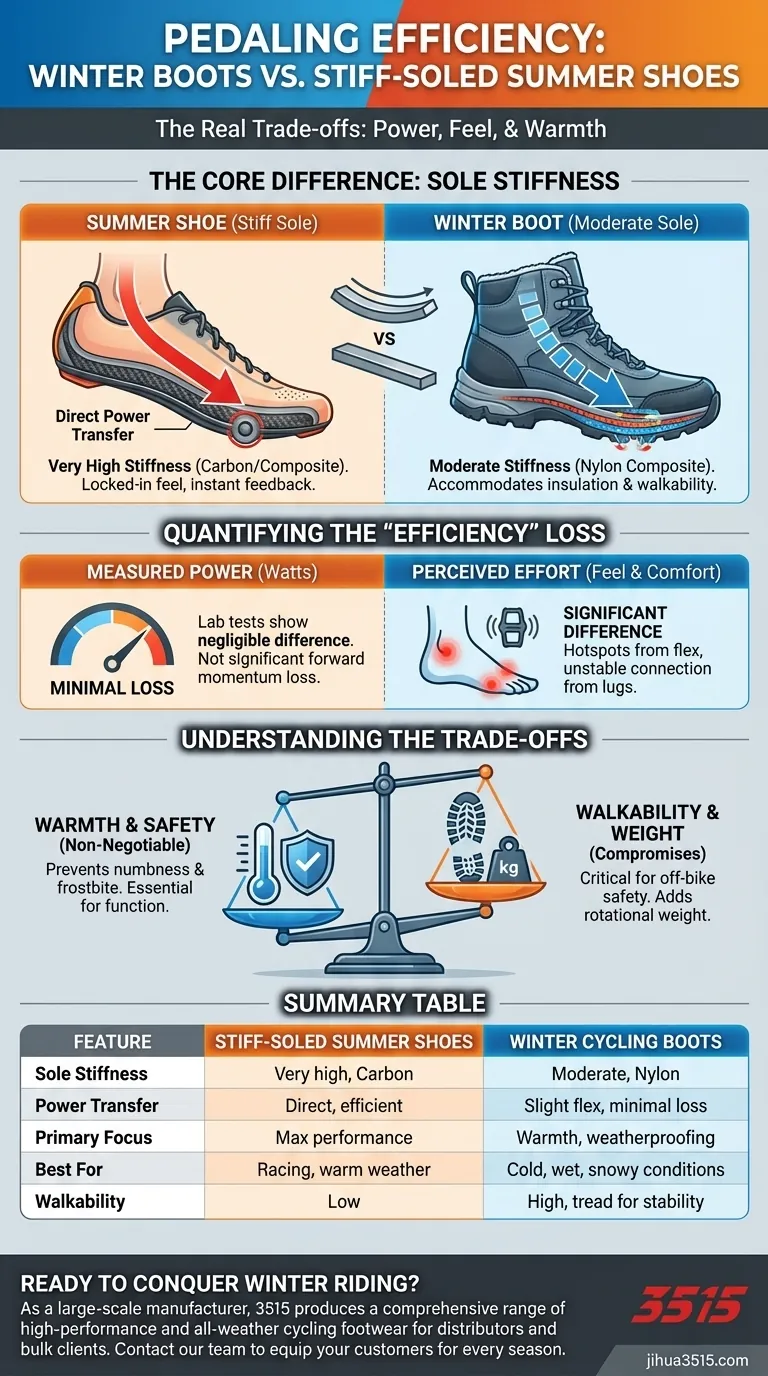
Related Products
- Wholesale Training Shoes with Dial Lacing System Custom OEM Manufacturing
- Premium KPU Athletic Safety Shoes for Wholesale
- Durable Rubber-Soled Utility Shoes for Wholesale & Custom Brand Manufacturing
- Custom Safety Shoe Manufacturer for Wholesale & OEM Brands
- Wholesale Breathable Training Shoes Custom Athletic Footwear Manufacturer
People Also Ask
- What is a Flyknit shoe? The Ultimate Guide to Seamless, Lightweight Performance
- What is a stylish way to wear heeled lace-up boots? Master the Art of Stylish Contrast
- Can Blucher shoes have decorative elements? Unlock the Versatility of Brogue Details
- How do non-slip athletic shoes differ from regular athletic shoes? Discover the Grip Technology
- How can tall socks enhance the look of lace-up boots? Add Style, Color & Texture
